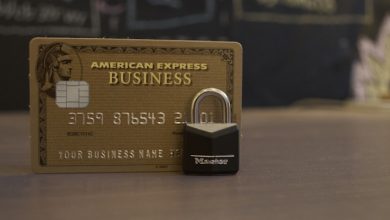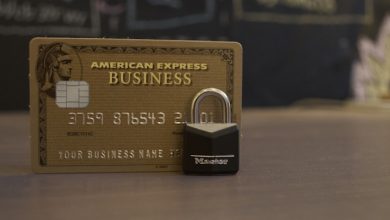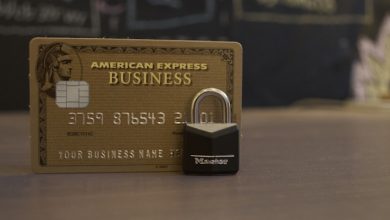What Is a Crypto Wallet and How Does It Work?

- Understanding the Basics of Cryptocurrency Wallets
- Types of Crypto Wallets Available in the Market
- The Importance of Private Keys in Securing Your Crypto Assets
- Step-by-Step Guide on Setting Up Your First Crypto Wallet
- Exploring the Differences Between Hot and Cold Wallets
- Tips for Safely Storing and Managing Your Crypto Wallet
Understanding the Basics of Cryptocurrency Wallets
Cryptocurrency wallets are digital tools that allow users to securely store, send, and receive cryptocurrencies such as Bitcoin, Ethereum, and Litecoin. These wallets work by generating pairs of cryptographic keys – a public key that serves as the wallet address for receiving funds, and a private key that is used to sign transactions and access the funds stored in the wallet.
There are several types of cryptocurrency wallets, including hardware wallets, software wallets, and online wallets. Hardware wallets are physical devices that store the user’s private keys offline, making them less vulnerable to hacking. Software wallets are applications or programs that can be installed on a computer or mobile device, while online wallets are web-based services that store the user’s keys on the cloud.
When a user wants to send cryptocurrency from their wallet to another user, they create a transaction using their private key to sign it. The transaction is then broadcasted to the cryptocurrency network, where it is confirmed by miners and added to the blockchain. Once the transaction is verified, the recipient’s wallet address receives the funds, and the sender’s wallet balance is updated accordingly.
Types of Crypto Wallets Available in the Market
There are several types of crypto wallets available in the market to store your digital assets securely. Here are some of the most common ones:
- Hardware Wallets: These wallets store your cryptocurrencies offline on a physical device, making them highly secure against online hacking attempts.
- Software Wallets: These wallets are digital applications that can be accessed through desktop or mobile devices. They are convenient for daily transactions but may be vulnerable to online attacks.
- Web Wallets: These wallets are accessible through a web browser and are usually provided by cryptocurrency exchanges. While convenient, they may pose security risks due to their online nature.
- Paper Wallets: Paper wallets involve printing out your public and private keys on a piece of paper. They are secure from online hacking but can be easily lost or damaged.
- Multi-Signature Wallets: These wallets require multiple private keys to authorize a transaction, adding an extra layer of security against unauthorized access.
It is essential to choose a crypto wallet that aligns with your security needs and convenience preferences. While hardware wallets offer the highest level of security, software wallets are more convenient for daily transactions. Consider the pros and cons of each type before selecting the right wallet for your needs.
The Importance of Private Keys in Securing Your Crypto Assets
Private keys play a crucial role in ensuring the security of your crypto assets. These keys are essentially long strings of alphanumeric characters that act as a password to access and manage your digital currencies. Without the private key, it is impossible to make any transactions or access the funds stored in your wallet.
It is essential to keep your private key secure and confidential at all times. If someone gains access to your private key, they can easily steal your crypto assets without leaving a trace. This is why it is recommended to store your private key offline in a secure location, such as a hardware wallet or a piece of paper kept in a safe place.
When setting up a crypto wallet, you will receive a private key along with a public key. The public key is used to receive funds, while the private key is needed to send funds. It is important to never share your private key with anyone, as this would compromise the security of your assets.
In conclusion, private keys are a fundamental aspect of securing your crypto assets. By keeping your private key safe and confidential, you can protect your digital currencies from theft and unauthorized access. Always remember to back up your private key and never share it with anyone to ensure the safety of your investments in the world of cryptocurrency.
Step-by-Step Guide on Setting Up Your First Crypto Wallet
Setting up your first crypto wallet is a straightforward process that can be done in a few simple steps.
- Choose a reputable crypto wallet provider. Make sure to do your research and select a wallet that offers strong security features and user-friendly interface.
- Download the wallet app from the official website or app store. Be cautious of fake apps that may compromise your security.
- Install the app on your device and follow the on-screen instructions to create a new wallet.
- Set a strong password and write down your recovery phrase. This will be crucial in case you ever need to restore access to your wallet.
- Once your wallet is set up, you can start receiving and sending cryptocurrencies. Be sure to double-check the recipient’s address before making any transactions.
Remember to regularly back up your wallet to prevent any loss of funds in case of device failure or theft. Stay informed about the latest security practices to keep your crypto assets safe.
Exploring the Differences Between Hot and Cold Wallets
When it comes to crypto wallets, one of the key distinctions to be aware of is the difference between hot and cold wallets. These two types of wallets offer varying levels of security and accessibility, making them suitable for different purposes.
- Hot wallets are connected to the internet, making them more vulnerable to hacking and cyber attacks. They are ideal for frequent transactions and trading due to their convenience and ease of access.
- Cold wallets, on the other hand, are offline storage devices that offer enhanced security by keeping your private keys offline. While they are less convenient for daily transactions, they are highly recommended for long-term storage of large amounts of cryptocurrency.
It’s important to consider your individual needs and risk tolerance when choosing between a hot or cold wallet. Some users opt to use a combination of both types to balance security and accessibility. Ultimately, the choice between a hot and cold wallet will depend on your specific preferences and requirements.
Tips for Safely Storing and Managing Your Crypto Wallet
When it comes to safely storing and managing your crypto wallet, there are a few tips to keep in mind to ensure the security of your digital assets. Here are some best practices to follow:
- Choose astrong password that is unique and not easily guessable.
- Enable two-factor authentication (2FA) to add an extra layer of security to your wallet.
- Keep a backup of your wallet recovery seed in a secure location, such as a safe deposit box or a fireproof safe.
- Avoid storing large amounts of crypto on exchange wallets for extended periods. Transfer them to a hardware wallet for added security.
- Regularly update your wallet software to ensure you have the latest security features and fixes.
By following these tips, you can help protect your crypto assets from potential security threats and keep your investments safe.



